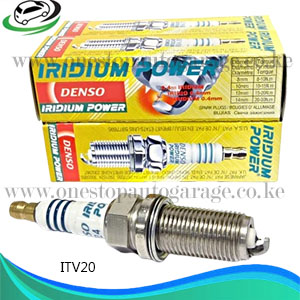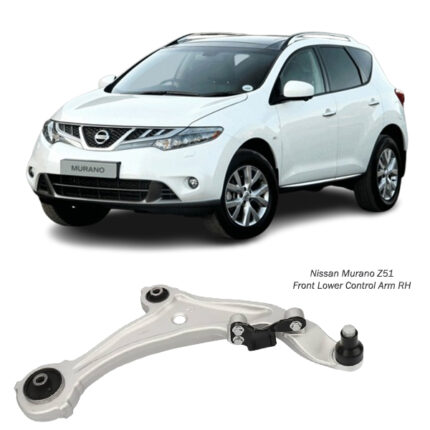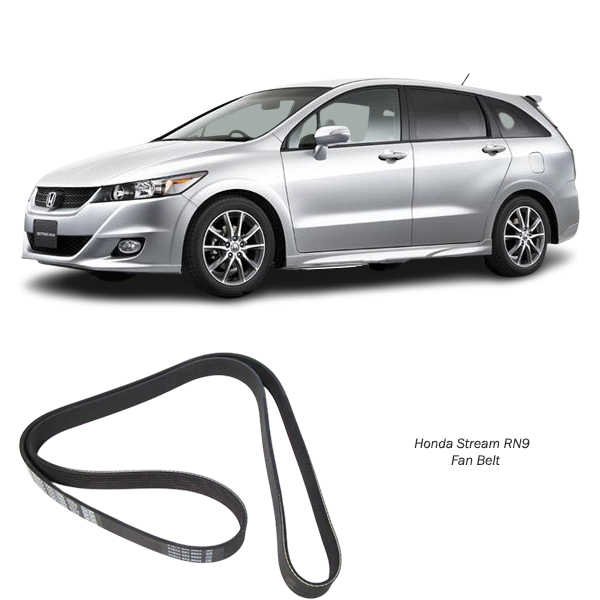-11%
Get Honda Stream RN9 Fan Belt 7PK2060 in Kenya
The fan belt, also known as a drive belt or serpentine belt, is an essential component in a vehicle’s engine system. It powers various accessories by transferring mechanical energy from the engine’s crankshaft. Though modern vehicles often use serpentine belts to drive multiple accessories, the term “fan belt” persists due to its traditional role in powering the engine’s cooling fan. This guide explores the functions, design, maintenance, replacement, and benefits of the fan belt in detail.
What is a Fan Belt?
The fan belt is a loop of flexible material that transmits rotational power from the crankshaft pulley to other engine components. Traditionally, it was responsible for driving the cooling fan in older vehicles. In modern systems, it drives components such as the alternator, water pump, power steering pump, and air conditioning compressor.
Key Characteristics:
- Made from durable rubber, synthetic compounds, or reinforced materials like neoprene or EPDM (Ethylene Propylene Diene Monomer).
- Designed to withstand high temperatures, friction, and mechanical stresses.
- Features grooves or ribs for optimal grip and alignment with pulleys.
Functions of the Fan Belt
- Powers Essential Components:
The fan belt is crucial for the operation of components such as:- Alternator: Ensures the battery remains charged and provides power to electrical systems.
- Water Pump: Circulates coolant through the engine to regulate temperature.
- Power Steering Pump: Reduces the effort needed to turn the steering wheel.
- Air Conditioning Compressor: Powers the air conditioning system for climate control.
- Facilitates Engine Cooling:
In older vehicles, the fan belt drove the cooling fan directly. While modern vehicles often use electric fans, the belt may still drive the water pump, indirectly contributing to engine cooling. - Maintains Vehicle Efficiency:
By efficiently transmitting power from the engine to various accessories, the fan belt contributes to overall engine efficiency and performance.
Design and Structure
The fan belt is engineered for durability and efficiency. Its design includes:
- Ribbed or Grooved Surface:
Provides a firm grip on the pulleys, minimizing slippage and maximizing power transmission. - Reinforced Material:
Modern belts are reinforced with synthetic fibers or steel cords for added strength and longevity. - Flexible Core:
Allows the belt to bend and conform to the pulleys while resisting wear and tear. - Heat-Resistant Coating:
Protects the belt from degradation caused by high engine temperatures and environmental factors.
Types of Fan Belts
- V-Belt:
- Found in older vehicles.
- Named for its V-shaped cross-section, which fits into the grooves of the pulley.
- Each accessory often required its own V-belt.
- Serpentine Belt:
- Common in modern vehicles.
- A single, wide belt with multiple ribs that drives multiple components simultaneously.
- Simplifies the engine layout and maintenance.
- Timing Belt (Not to be Confused):
- While sometimes mistaken for a fan belt, the timing belt synchronizes the camshaft and crankshaft.
Signs of a Worn or Failing Fan Belt
- Squealing Noise:
A high-pitched squeal when the engine is running often indicates belt slippage due to wear, misalignment, or insufficient tension. - Visible Cracks or Fraying:
Inspecting the belt for physical damage, such as cracks, fraying edges, or glazing, can reveal signs of deterioration. - Loss of Power to Accessories:
A failing belt can cause issues with the alternator, power steering, or air conditioning, leading to reduced performance or complete failure. - Overheating Engine:
If the belt drives the water pump, a broken belt can cause the engine to overheat due to inadequate coolant circulation. - Battery Warning Light:
A malfunctioning alternator due to a damaged fan belt may trigger the battery warning light on the dashboard.
Benefits of a High-Quality Fan Belt
- Enhanced Performance:
A well-functioning belt ensures smooth operation of engine accessories, contributing to optimal vehicle performance. - Durability:
High-quality materials and construction ensure resistance to wear, heat, and environmental factors, extending the belt’s lifespan. - Reduced Maintenance Costs:
A reliable fan belt minimizes the risk of unexpected failures and costly repairs to related components. - Improved Fuel Efficiency:
Efficient power transmission reduces the engine’s workload, enhancing fuel economy.
Maintenance Tips for Fan Belts
- Regular Inspections:
- Inspect the belt for cracks, fraying, or glazing at least every 10,000–15,000 miles.
- Look for signs of misalignment or pulley wear.
- Maintain Proper Tension:
A belt that is too loose may slip, while one that is too tight can cause excessive wear on pulleys and accessories. Use a belt tension gauge if necessary. - Keep the Belt Clean:
Avoid exposure to oil, grease, or coolant, which can degrade the belt material. - Replace as Recommended:
Follow the vehicle manufacturer’s recommendations for belt replacement, typically every 50,000–100,000 miles. - Check Pulley Alignment:
Misaligned pulleys can cause uneven wear and premature belt failure. - Monitor for Noise:
Squealing or chirping sounds may indicate the need for adjustment, cleaning, or replacement.
Replacing a Fan Belt
- Tools Required:
- Wrenches or sockets.
- Belt tensioner tool.
- Diagram of the belt routing (found in the owner’s manual or engine bay).
- Steps to Replace:
- Locate the Belt: Identify the fan belt and its routing around the pulleys.
- Release Tension: Use the tensioner tool to release the tension on the belt.
- Remove the Old Belt: Carefully slide it off the pulleys.
- Install the New Belt: Align the new belt according to the routing diagram, ensuring it fits securely into the pulley grooves.
- Adjust Tension: Ensure the belt has proper tension using the tensioner tool.
- Test the Engine: Start the engine to check for proper operation and any unusual noises.
Consequences of Neglecting Fan Belt Maintenance
- Accessory Failure:
A broken belt can disable critical components such as the alternator, power steering, or water pump, leading to system failures. - Engine Overheating:
If the water pump is affected, the engine may overheat, causing severe damage. - Increased Repair Costs:
A neglected belt can lead to damage to pulleys, bearings, or other related components, resulting in expensive repairs. - Stranded Vehicle:
A sudden belt failure can leave the vehicle inoperable, potentially stranding the driver.
Conclusion
The fan belt is a vital component in maintaining a vehicle’s performance and reliability. Its role in powering essential engine accessories makes it crucial to monitor and maintain regularly. By investing in a high-quality fan belt and adhering to proper maintenance practices, drivers can ensure a smoother, safer driving experience and avoid costly repairs. Always consult your vehicle’s manual for specific replacement intervals and requirements, and don’t hesitate to seek professional assistance when necessary.
Follow us on Facebook for more parts.



